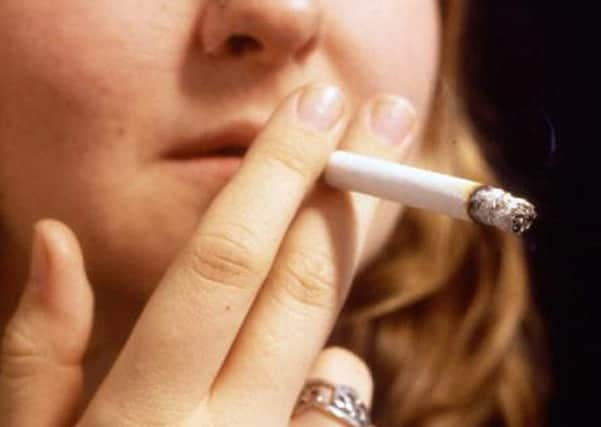Sheila Duffy: Truth about illicit tobacco reveals decline


Illicit tobacco is one of those subjects (like e-cigarettes) where the quantity of the media coverage is not always matched by the quality.
To be fair to hard-pressed journalists it is hard to resist a succession of helpful public relations companies providing them with ready-made news stories which can support dramatic headlines on the “booming” illicit trade, corner shops closing, “unhealthy” fake fags and international crime networks.
Advertisement
Hide AdAdvertisement
Hide AdAt the same time leaked documents have revealed details of tobacco industry plans to use the media to scaremonger over illicit as part of their effort to oppose plain, standardised packaging for tobacco.
Those seeking an unbiased estimate of the scale and trends in illicit tobacco should use the annual figures from Her Majesty’s Revenue and Customs (HMRC), which is as close as we’re going to get to an expert, unbiased voice. So we’re always keen to see the annual Tax Gaps report from HMRC, and the 2014-15 figures were published recently.
Anyone who had been following the tobacco-industry sourced media stores must have found the figures a bit surprising. So let’s set them out clearly.
The best estimate of the illicit market remains static at 10 per cent of manufactured cigarette sticks.
The best estimate of the illicit share of the hand-rolling tobacco market was down from 39 per cent to 35 per cent.
These are percentages of an overall tobacco market which continues to decline.
So a static percentage of the market actually relates to a decline in the amount of illicit tobacco used (for example, the reported rise in illicit market share in cigarette sticks from 9 per cent to 10 per cent in 2013-14 actually related to a 7 per cent drop in numbers of illicit cigarettes).
These figures indicate that the illicit tobacco market is at historically low levels – in 2000-1 HMRC estimates were that 22 per cent of cigarettes and 61 per cent of hand-rolling tobacco was illicit.
Advertisement
Hide AdAdvertisement
Hide AdThe decline in overall volume since then has been 76 per cent in illicit cigarette sticks and 33 per cent in illicit hand-rolling tobacco. Could any unbiased observer conclude that these figures are “booming”?
This is not to play down the importance of illicit tobacco, which brings criminal elements into communities, bypasses health regulations we have worked long and hard to achieve and deprives the Exchequer of much-needed tax revenue.
Nor is it to say that everything’s in hand – the reduction in illicit tobacco is the planned and deliberate result of robust enforcement measures, including restrictions on the tobacco companies themselves.
To keep the lid on illicit tobacco we need to ensure that robust enforcement is not hampered by budget cuts and austerity.
And we need to generate a community discussion, to lower the demand for the product, with NHS Greater Glasgow and Clyde having created useful tools to support that. What it does mean is that the idea of a “booming illicit trade” at the centre of tobacco company campaigns against public health measures is, appropriately enough, not the real deal.
• Sheila Duffy is chief executive of ASH Scotland